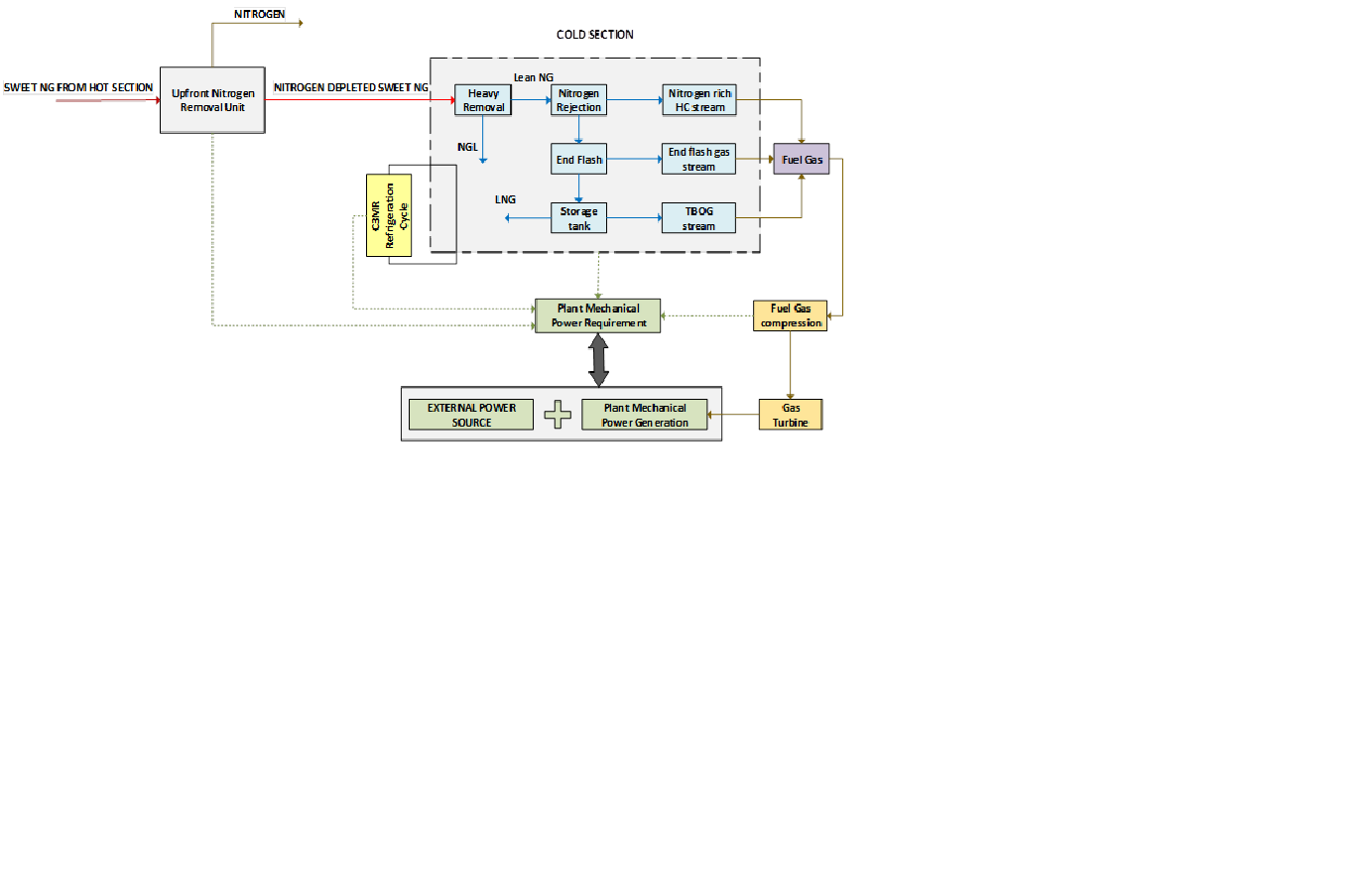(256b) Benefits of Removing Nitrogen before the Cold Section in Baseload LNG Plant
AIChE Annual Meeting
2022
2022 Annual Meeting
Fuels and Petrochemicals Division
Developments in Shale Gas and Natural Gas
Tuesday, November 15, 2022 - 8:20am to 8:40am
Nitrogen is an inert gas and does not contribute to the heating value of gas. Moreover, LNG calls for stringent and lower nitrogen specifications, as >1mol% nitrogen content in LNG tanks can cause safety hazards and risk of rollover.2 The separation of nitrogen from feed NG is implemented by designing separation processes that exploit differences in the molecular, thermodynamic, and transport properties of nitrogen and hydrocarbons (methane). As most of the physical properties of methane and nitrogen are comparable, designing a cost-effective nitrogen removal process is challenging.2 Nonetheless, the difference between the boiling points (B.P) of methane (B.P ~ 111.7 K ) and nitrogen (B.P ~77.3 K) allows their separation by distillation process only under cryogenic conditions.3 Most LNG plants remove nitrogen near the tail of the plant after the liquefaction process. Hence nitrogen passes through the entire system as dead weight. Therefore, the presence of nitrogen in the NG stream increases the energy requirements and reduces the plant production capacity.
To address the above concerns we propose upfront nitrogen removal (UNrem) as a promising alternative to enhance the feasibility of the LNG process. The concept of UNrem is based on removing nitrogen from the NG stream before it enters the cold section. The UNrem will create extra volume in the cold section, which will be replaced by hydrocarbons. Hence the UNrem would increase the plant capacity while reducing the power required to liquefy NG. We first carry out simulation and optimization of the cold section for different percentages of UNrem to quantify the improvements in the production rate (PR) and specific power consumption (SPC). Then we review all possible physical and chemical-based nitrogen separation technologies to select an efficient UNrem process that can either be retrofitted in an existing LNG plant or can be included in a new LNG plant.4 Finally we carry out a thorough techno-economic analysis to estimate the cost of retrofitting UNrem technology into an existing LNG plant and evaluate the impact of different percentages of UNrem on the overall cost of LNG production.
We computed the energy consumption, PR, and SPC of seven different UNrem scenarios and compared them with the conventional cold section (base case). The results indicated that 87.5% UNrem increased the LNG PR by 4.4% and decreased the total energy consumption and SPC by 0.241% and 4%, respectively, in comparison with the base case.5 After reviewing and comparing various physical and chemical-based nitrogen separation technologies based on energy consumption, feasibility, and scalability, cryogenic distillation, membranes, and lithium cycle (Li-Cy) were shortlisted as potential UNrem technologies. Though distillation and membranes have high technology readiness level (TRL), their energy consumptions are high. Hence Li-Cy was selected as UNrem technology for the techno-economic analysis. Results show that 87.5% UNrem would decrease the cold section CAPEX and OPEX by 3.2 % and 2.3% respectively compared to the base case. The CAPEX and OPEX of the lithium cycle increase linearly with the UNrem percentage. The total annual cost (TAC) and LNG energy content increased by 12.3% and 4.5% respectively over the base case for 87.5% UNrem. This leads to a 7.4% COE increment over the base case for 87.5% UNrem. The profit calculation for LNG price of 15$/MBTU showed a 4.27% or 101.74 million $/year increase in profit for 87.5% UNrem as compared to the base case.
